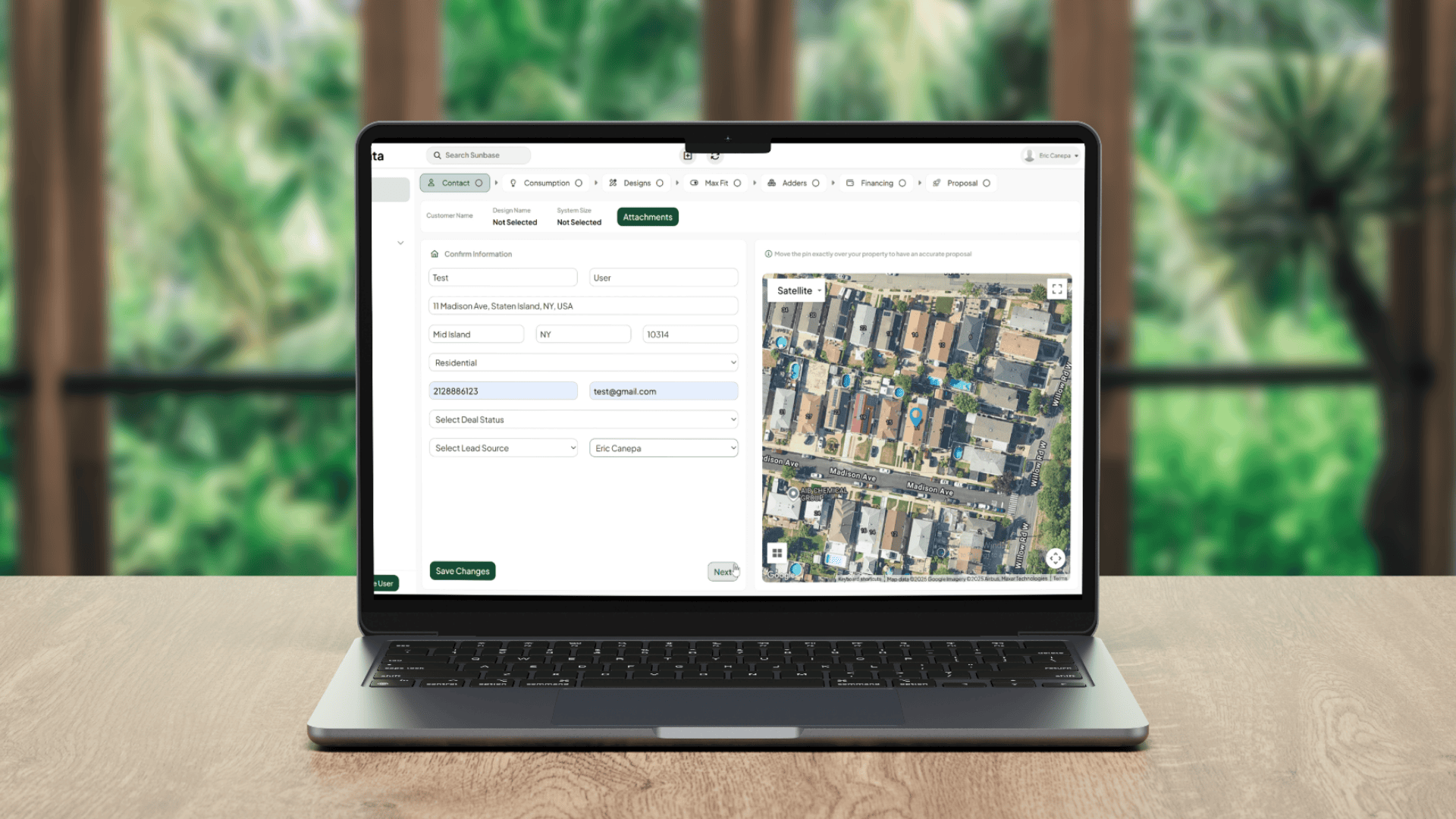December 21, 2022
What is Business-to-business (B2B) sales?
Business-to-business (B2B) leads are the contacts that businesses use to connect and collaborate with other companies. These leads can be sourced through different marketing methods such as email campaigns, webinars, search engine optimization (SEO), content marketing and more. The main objective of B2B lead generation is to establish relationships with potential customers and build trust.
Once businesses have established a list of prospective leads, they can use various strategies to nurture them into becoming paying customers. Companies might use automated emails, personalized content campaigns or targeted advertising to stay in touch with their prospects. Additionally, B2B lead generation often involves identifying target audiences and crafting tailored messages to appeal to them. Companies can also use customer relationship management (CRM) software to track and manage their leads, making sure they are engaging in meaningful conversations with potential customers.
Ultimately, successful B2B lead generation helps businesses create a pipeline of interested prospects who may become loyal customers. With the right strategies and technology, companies can nurture these relationships and convert leads into paying customers. In today's competitive market, having a well-executed lead generation tactic is essential for businesses looking to grow and succeed.
Why are Business-to-business (B2B) sales important for businesses?
Business-to-business (B2B) sales are an essential part of many business models. This type of sales involves two commercial entities, such as companies or manufacturers, trading goods or services with each other. B2B sales have become increasingly important for businesses to generate growth and improve profitability.
The top five reasons why B2B sales are important for businesses include:
1. Strengthens customer relationships:
Businesses can build long-term relationships with their customers through B2B sales. They can also offer personalized services and solutions to meet the specific needs of each customer.
2. Increases market share:
With a larger market share, it is easier for businesses to capture more customers, and this will provide them with leverage over their competitors.
3. Generates higher profit:
B2B sales tend to involve larger orders compared to consumer-facing (B2C) sales. This means that businesses can make more money from each sale, which leads to higher profits.
4. Improves efficiency:
Businesses can streamline their operations and reduce costs by automating processes like order fulfilment, invoicing, shipping, and more. This leads to improved operational efficiency and cost savings in the long run.
5. Enhances brand visibility:
B2B sales give businesses the opportunity to showcase their brand and products in a larger market. This can help them increase their visibility and gain more recognition from potential customers.
B2B sales are essential for businesses to stay competitive in today's market. They provide numerous advantages, such as strengthening customer relationships, increasing market share, generating higher profit, improving efficiency, and enhancing brand visibility. By taking advantage of B2B sales opportunities, businesses can maximize their profits and expand their customer base.
Where do most B2B leads come from?
In the business-to-business (B2B) environment, leads are essential for success. But where do these leads come from? Fortunately, there are a number of ways to generate high-quality B2B leads that can help your business thrive. Here are five of the most effective sources:
1. Social Media:
Social media is an essential tool for B2B lead generation. Utilizing platforms such as LinkedIn, Twitter, and Facebook to share content about your brand and its services or products can help attract potential leads.
2. Content Marketing:
Content marketing is a powerful way to generate leads through various mediums such as videos, podcasts, ebooks, and blog posts. These content pieces should be helpful and relevant to your target audience, as this will help establish trust and create relationships with potential leads.
3. Referrals:
Utilizing referrals from existing customers is an excellent method for generating B2B leads. Offer incentives for current customers who recommend you to their network, as this can help spread the word and gain new leads.
4. Search Engine Optimization (SEO):
SEO is a great way to boost your visibility in search engine results pages, which can help bring in new leads. Make sure to optimize your website content with relevant keywords and phrases, as this will give you an edge over competitors when it comes to appearing in search engine results.
5. Paid Advertising:
Pay-per-click (PPC) advertising and other paid campaigns can be effective for generating leads quickly. Utilize the right strategies such as retargeting ads, creating landing pages, and optimizing ad campaigns to ensure that you are getting the most out of your paid advertising efforts.
By taking advantage of these five sources, you can generate quality leads and grow your business in the B2B space. Identifying a combination of methods that works best for your organization is essential to successful lead generation.
What are the steps to generate B2b sales leads?
Generating leads is a key component of any successful business-to-business (B2B) marketing strategy. Lead generation involves identifying potential customers who may be interested in what your company has to offer and then taking the necessary steps to reach out to them and convert them into paying customers.
The process of finding, nurturing, and converting leads into paying customers is a challenge for many businesses, but with the right strategies in place, it can be made easier. In this part of the article, we'll take you through the steps to generate B2B leads and discuss how you can use these techniques to help your business grow.
1. Identify Your Target Audience:
The first step in any lead-generation process is to identify your target audience. You'll need to know who your ideal customers are, what they're looking for, and where they're likely to be found. This can be done by researching the industry you operate in and learning about the demographics of potential customers as well as their interests and buying habits.
2. Build a Lead Magnet:
Once you have identified your target audience, the next step is to create a lead magnet that will draw them in. This could be anything from an eBook or white paper to a free consultation or trial offer. Offering something of value can help you capture leads and build relationships with potential customers.
3. Optimize Your Website for Leads:
You'll also need to make sure your website is optimized for lead generation. This includes making sure that all the necessary contact information, such as a phone number and email address, are prominently displayed on your site. Additionally, optimizing your website's design and content can help to improve its ability to generate leads.
4. Reach Out to Your Prospects:
Once you have optimized your website, you can begin reaching out to potential customers through various channels such as email, social media, and paid search campaigns. Be sure to use customized messaging that is tailored to the needs of each individual prospect in order to increase the chances of conversion.
5. Measure Your Results:
Finally, you'll need to track and measure the success of your lead-generation efforts in order to refine your strategies for maximum effectiveness. Keep an eye on metrics such as open rates, click-through rates, and conversion rates to gain insights into how well your campaigns are performing.
Generating leads is an essential part of any B2B marketing strategy and can help you grow your business. By following the steps outlined above, you can optimize your website for lead generation, create tailored outreach campaigns, and track your results to ensure that you're maximizing the success of your efforts. With the right approach in place, generating B2B leads can help your business reach new heights.
How can a lead management software help you generate B2b leads?
Lead management software is an invaluable tool for businesses looking to increase their B2B leads. From collecting customer data to tracking lead progress, a lead management system can help companies maximize their resources and improve sales results. In this part of article, we’ll discuss five ways lead management software can help generate B2B leads.
1. Improve Data Quality:
Lead management software helps businesses capture, store, and analyze customer data more efficiently and accurately than manual methods. This enables companies to gain a better understanding of their target market, helping them create high-quality leads that are more likely to convert into sales.
2. Automate Outreach:
Lead management software can automate tedious tasks such as email campaigns, saving businesses time and money. Automated messages can be tailored to target specific groups of leads, allowing businesses to reach the right people with the right message.
3. Monitor Performance:
Most lead management systems come equipped with reporting tools that allow businesses to track lead progress and measure the success of their campaigns. This gives businesses valuable insights into what’s working and what isn’t, so they can make necessary adjustments to optimize their lead generation efforts.
4. Assign Leads:
With lead management software, businesses can assign leads to sales teams quickly and accurately. This ensures that no leads are overlooked and all leads are given the attention they deserve, increasing the likelihood of successful sales.
5. Personalize Interactions:
Lead management software allows businesses to personalize their interactions with customers. For example, businesses can use customer data to create customized messages that appeal to each lead’s individual interests, boosting engagement and improving conversion rates.
Lead management software can be a powerful tool to help businesses generate B2B leads. From improving data quality and automating outreach, to monitoring performance and personalizing interactions, lead management software can help companies maximize their resources and increase their sales results. Investing in a lead management system is an investment in the future success of your business. You can read this blog post to know different lead management software and learn some great insight of the same.
Sunbase lead management software
Sunbase Lead Management Software is designed with the needs of solar companies in mind, making it a great choice for any business looking to streamline its lead and customer management processes. With features like lead capture, sales process, tracking, CRM integration, and project management, Sunbase provides a comprehensive solution that can help solar sales teams stay organized while on the go with its mobile app. It also allows for integration with existing systems so companies can easily sync up their data within the software. Sunbase's pricing plans are adjustable to fit any budget, and it offers support from a team of experts who are available to help you every step of the way of your lead generation. If you're looking for an intelligent lead management solution specifically designed for solar sales and marketing teams , Sunbase is worth considering. With its comprehensive features, adjustable pricing plans and support team, it could be the perfect fit for your business's needs.
Sunbase Lead Management Software allows sales team generate sales leads more leads easily and also allows you to get more out of your leads by tracking their progress from lead generation strategies sales qualified leads, sales reps to project completion. It provides insights into customer behavior and enables sales teams to upsell products and services more effectively. With its automated processes, Sunbase can make it easier for solar companies to stay on top of their leads, improve customer relations and maximize business growth. And with the help of its mobile app, you'll be able to access your data whenever and wherever you need it.
Conclusion:
By using the right strategies, you can generate more qualified leads and convert them into paying customers. Generating B2B leads is a complex process that requires dedication and effort, but if done correctly, it can be an invaluable asset for your business. With the right combination of research, optimization, and outreach, you can build a successful lead-generation strategy that will help your business thrive.
About Sunbase
Sunbase helps solar companies succeed through a suite of Solar CRM tools like Solar Lead Management Software, Solar Proposal Software, etc.! To book your free demo or an appointment, contact us here!
One Platform. Zero Chaos. Run Your Entire Business in One Place.
Sunbase replaces your CRM, proposals, scheduling, job tracking, and reporting tools — all inside one clean, connected platform.
About Sunbase
The All-In-One Platform to Run Your Entire Business
Sunbase helps you organize operations, streamline daily workflows, and manage everything - from first customer contact to final project deliver- in one connected system.
Our Mission
- Organize your business.
- Optimize your workflow.
- Automate what slows you down.
Why Businesses Choose Sunbase
One Connected Workflow
Replace scattered tools and manual processes with a single platform that brings together your team, tasks, customers, jobs, and performance data.
🌎 Global Presence
Serving the United States, Canada, India, LATAM, Australia, and 10+ international markets.
👥 11,000+ Users
Trusted by contractors, installers, project managers, sales teams, and field technicians.
🏗️ Built for All Sizes
From small contracting teams to fast-growing enterprises, Sunbase adapts to your workflow.
Useful Links For You
Stop Managing Your Business Manually. Automate It.
Sunbase automates workflows, reduces mistakes, and helps your team get more done - without hiring extra staff or juggling multiple tools.











